Does a fish swim in water? Does a one-legged duck swim in circles? Do I enjoy providing you with information that will educate and encourage you? The answer is yes! Swimming will help you build muscle but will it make you like Christopher Bumstead in one year? No, it unfortunately would not. If it did, your local YMCA would be filled with gym bros, and there would be no more water in the pool when they get out. Not to mention the hot tub, for that post-workout relaxation, would need a lot more chlorine to keep it sanitary.
But how does swimming build muscle? That is a great question we are getting ready to answer right now!
How Does Swimming Build Muscle Mass?
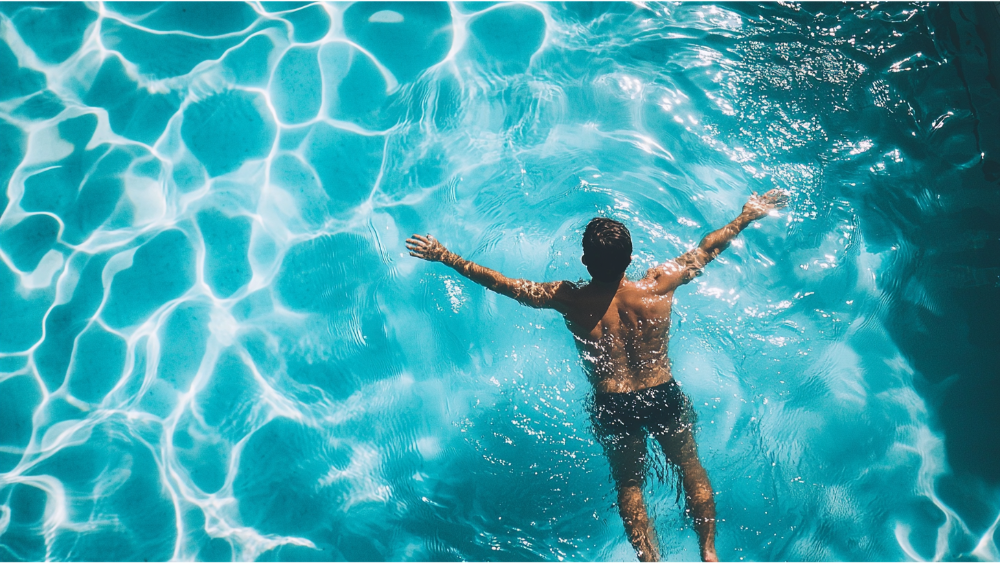
Swimming builds muscle through resistance training similar to weight lifting. If you did not already know, water is 12-14 times denser than air. This is a natural resistance that your muscles have to push through to help your whole body weight move forward. Although it is not much, there is enough resistance for you to start building some muscle. It is possible to see plenty of muscle growth when swimming in both your upper body and lower body.
Increase or Decrease Resistance Levels
You can always increase or decrease the resistance levels in the pool by using certain tools. A parachute, for example, will increase resistance forcing you to kick and pull harder to go the same speed if you were not attached to the parachute. Fins would decrease resistance, as they help propel you forward without having to exert as much energy.
A Cardiovascular Exercise Better than Running
Swimming is often considered superior to running both as a cardiovascular exercise and a muscle-building workout for several reasons. Unlike running, which is primarily a lower-body activity, swimming engages nearly every muscle group in the body. The continuous resistance offered by water requires the arms, core, back, and legs to work in unison, promoting balanced muscle development throughout the entire body.
Swimming is a low-impact exercise that puts much less stress on the joints compared to running. This buoyancy in water allows for a high-intensity workout with minimal impact on bones and joints, making it an excellent option for those recovering from injuries or looking to prevent wear and tear on their joints. From a cardiovascular standpoint, swimming challenges the heart and lungs to work harder due to the resistance of water, often leading to improved endurance and lung capacity over time.
Swimming is a Full-Body Workout

Swimming is a true full-body workout that targets multiple muscle groups simultaneously to get you from one end of the pool to the other. There are a couple of different swimming strokes that will hit some muscle groups more than others such as freestyle (front crawl), backstroke, breaststroke, and butterfly. You might be wondering what muscles does swimming target and how can I start building muscle while swimming. Here we will be taking a look at the specific muscle groups used in swimming.
1. Arm and Shoulder Muscles
Swimming is an excellent workout for your arms and shoulders. Every stroke you perform in the water, from freestyle to butterfly, engages the arm and shoulder muscles. In particular, the deltoid and shoulder muscles work hard to pull your body through the water. Freestyle and backstroke especially rely on the shoulders for the overhead pulling and recovery phases, making swimming an effective way to strengthen and tone these muscles.
2. Upper Body Muscles
Swimming consistently engages your upper body muscles, including the chest, back, and arms. The pulling motion during each stroke works the pectorals (chest muscles) and latissimus dorsi (large back muscles), while the arms are driven by the biceps and triceps. The continuous motion and resistance in the water make swimming a fantastic way to build strength in the upper body while improving muscle endurance. The breaststroke and butterfly are the two movements that will target the chest and back a little more than freestyle or backstroke would.
3. Leg Muscles
Your leg muscles are constantly engaged in swimming, especially when performing kicks like the flutter kick, frog kick, or dolphin kick. The quadriceps and hamstrings in your thighs, along with the calves and gluteal muscles, provide the power needed to propel your body forward in the water. Strong, steady kicking is essential for speed and efficiency, making swimming a great way to strengthen and tone your lower body.
4. Hip Flexors
Swimming involves repetitive leg movement that also engages the hip flexors, which play a crucial role in raising and extending your legs during kicks. Whether you’re doing flutter kicks or the frog kick in breaststroke, the hip flexors are activated to maintain proper form and ensure smooth, efficient movements. Strengthening these muscles helps improve leg power and body alignment in the water.
5. Outer Abdominal Muscles
Swimming also engages the outer abdominal muscles, which are vital for core stability and body positioning in the water. These muscles help maintain a streamlined position, which reduces drag and enhances your speed. By activating the core, swimming helps tone and strengthen the abs, contributing to better posture both in and out of the water. Engaging the abs also ensures that your entire body moves as one unit, maximizing efficiency and minimizing energy loss.
Ways to Build Muscle in the Water
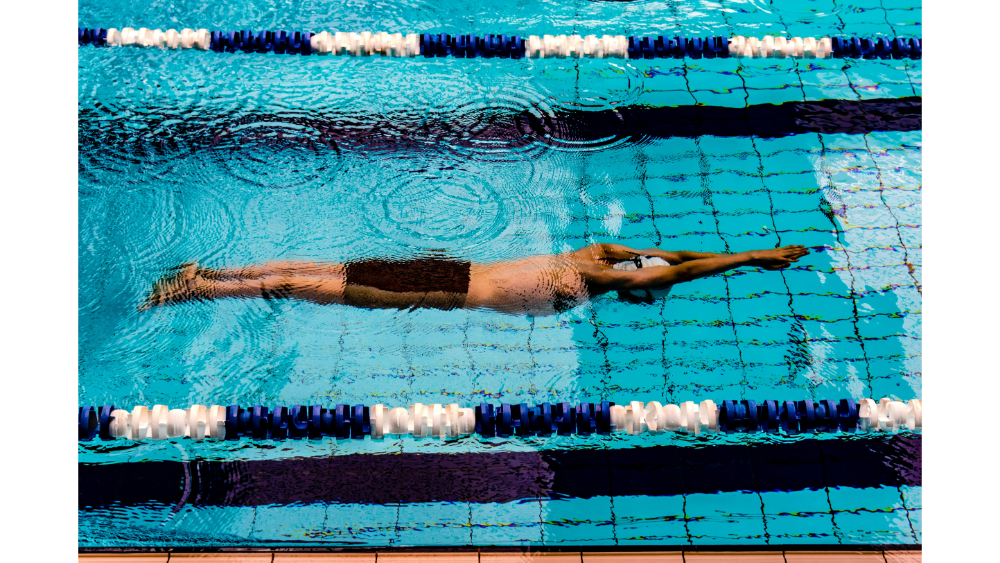
Here we have created a list of 7 different swimming workouts you can start using in the pool today! Doing these will make sure you hit all the different muscles in your body.
1. Freestyle Interval Sprint Workout
Freestyle, or front crawl, is one of the best strokes for building overall muscle, especially in the upper and lower body muscles. This workout alternates between sprints and rest periods to engage your fast-twitch muscle fibers.
Workout Structure:
• Warm-up: 200 meters freestyle at an easy pace
• Sprint Set: 10 x 50 meters freestyle (sprint as fast as possible for each 50 meters)
• Rest: 30 seconds between each sprint
• Cool down: 100 meters freestyle at a relaxed pace
Benefits: This high-intensity interval workout improves muscle power, especially in the upper body, arms, and shoulders, while also enhancing endurance.
2. Butterfly Power Workout
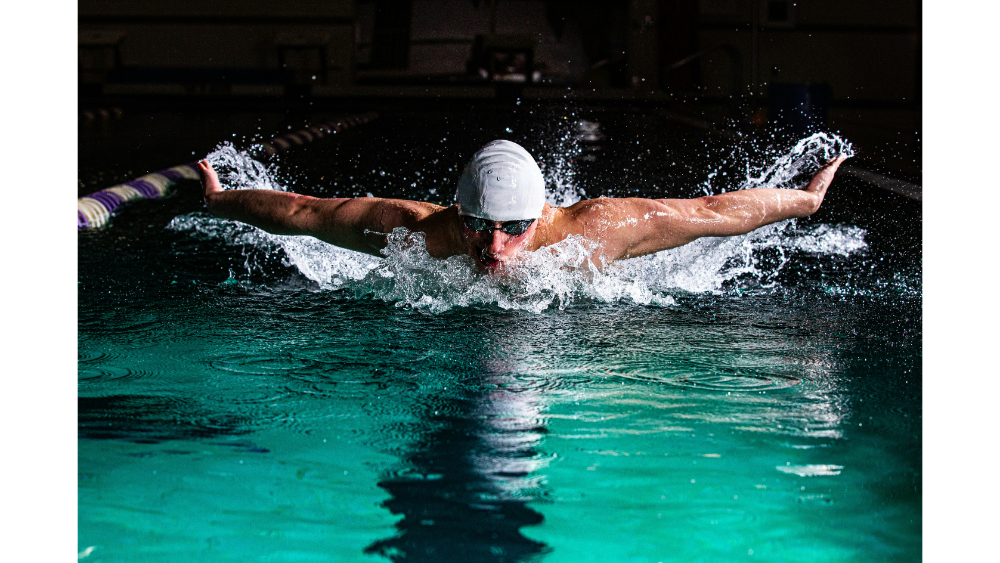
The butterfly stroke is intense and requires significant upper body strength, targeting the chest, back, and shoulder muscles, along with the core and hip flexors. The undulating motion also engages the outer abdominal muscles.
Workout Structure:
• Warm-up: 200 meters freestyle or backstroke
• Butterfly Set: 6 x 25 meters butterfly, focusing on powerful strokes
• Rest: 45 seconds between each 25 meters
• Core Strength Set: 4 x 50 meters dolphin kick on your back with a kickboard
• Rest: 30 seconds between each set
• Cool down: 100 meters breaststroke or freestyle
Benefits: This workout strengthens the upper body and core while also building muscle endurance in the legs and lower back.
3. Kickboard Leg Workout
Using a kickboard isolates your leg muscles and hip flexors, helping to build strength and endurance in the lower body. This workout focuses on kicking techniques to target the quadriceps, hamstrings, glutes, and calves.
Workout Structure:
• Warm-up: 200 meters freestyle at a moderate pace
• Kick Set: 8 x 50 meters flutter kick with a kickboard
• Rest: 20 seconds between each 50 meters
• Sprint Kick Set: 6 x 25 meters sprint kicks with a kickboard (as fast as possible)
• Rest: 30 seconds between each sprint
• Cool down: 100 meters backstroke or freestyle, no kickboard
Benefits: This workout is ideal for building lower body strength, especially in the legs, hips, and glutes, making it effective for muscle building in those areas.
4. Pull Buoy Strength Workout
Using a pull buoy between your legs removes the need to kick and focuses on the upper body muscles, such as the deltoids, arms, chest, and back. This helps you focus on pulling through the water to build upper body strength.
Workout Structure:
• Warm-up: 200 meters freestyle
• Pull Set: 5 x 100 meters freestyle with a pull buoy
• Rest: 30 seconds between each 100 meters
• Sprint Pull Set: 4 x 50 meters sprint freestyle with a pull buoy
• Rest: 45 seconds between each sprint
• Cool down: 100 meters easy swim without a pull buoy
Benefits: This workout isolates the upper body, allowing you to strengthen the arms, shoulders, back, and chest.
5. Breaststroke Strength and Endurance Workout
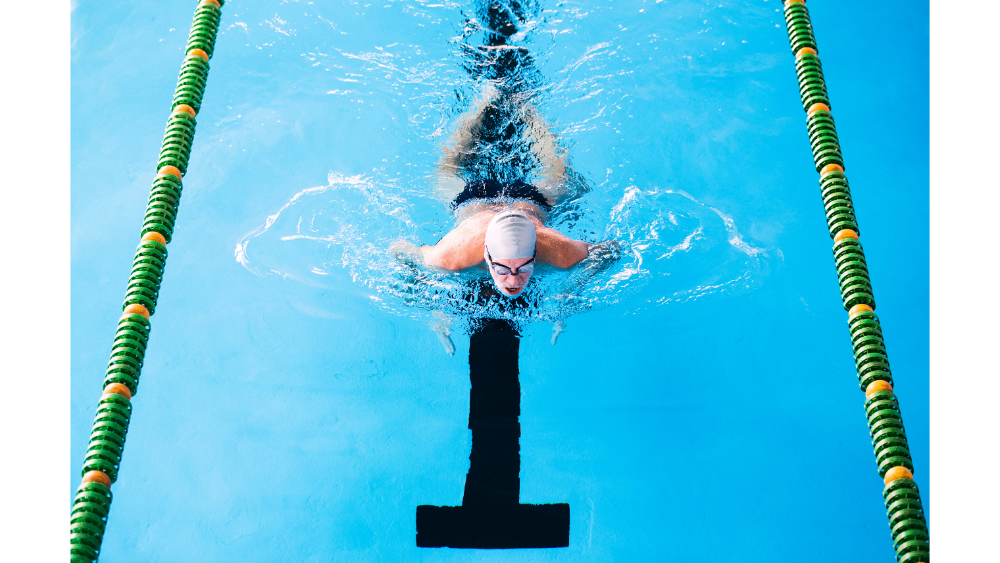
The breaststroke is great for targeting both the upper body and lower body simultaneously. The chest, shoulders, and arms are used in the pulling motion, while the legs and hip flexors are engaged in the frog-like kicking movement.
Workout Structure:
• Warm-up: 200 meters easy freestyle or backstroke
• Breaststroke Set: 6 x 100 meters breaststroke, focusing on a strong pull and powerful kick
• Rest: 30 seconds between each 100 meters
• Kick Set: 4 x 50 meters breaststroke kick with a kickboard
• Rest: 20 seconds between each set
• Cool down: 100 meters backstroke or freestyle
Benefits: This workout builds overall strength, particularly in the chest, shoulders, and legs, while improving coordination and endurance.
6. Parachute Resistance Swim Workout
Using a parachute or resistance equipment in the pool adds extra drag, forcing your muscles to work harder. This workout focuses on building both upper body muscles and leg muscles by swimming against the added resistance, similar to resistance training.
Workout Structure:
• Warm-up: 200 meters freestyle at a relaxed pace
• Parachute Set: 8 x 50 meters freestyle or backstroke with a resistance parachute
• Rest: 40 seconds between each set
• Sprint Set: 6 x 25 meters freestyle without parachute (sprint)
• Rest: 30 seconds between sprints
• Cool down: 100 meters easy backstroke or breaststroke
Benefits: The parachute adds resistance, building muscle strength in the arms, shoulders, legs, and core. It mimics weight training by increasing drag, making your muscles work harder with each stroke.
7. Distance Swim for Endurance and Muscle Building
Long-distance swimming, such as a 1,000- to 1,500-meter swim, is an excellent way to build muscular endurance and strength across the entire body, targeting both the upper body muscles and leg muscles.
Workout Structure:
• Warm-up: 200 meters freestyle
• Distance Swim: 1,000-1,500 meters freestyle at a steady pace
• Cool down: 100 meters backstroke or breaststroke
Benefits: Long-distance swimming builds endurance and strengthens muscles throughout the body, particularly the shoulders, arms, core, and legs.
Conclusion

What we provided you with today, I cannot promise you bigger muscles fast, impressive strength gains, or that you will be able to compete with Olympic swimmers, but I can promise you that incorporating a swim routine will be beneficial for you. Especially for those who would like to compete in an Ironman one day.
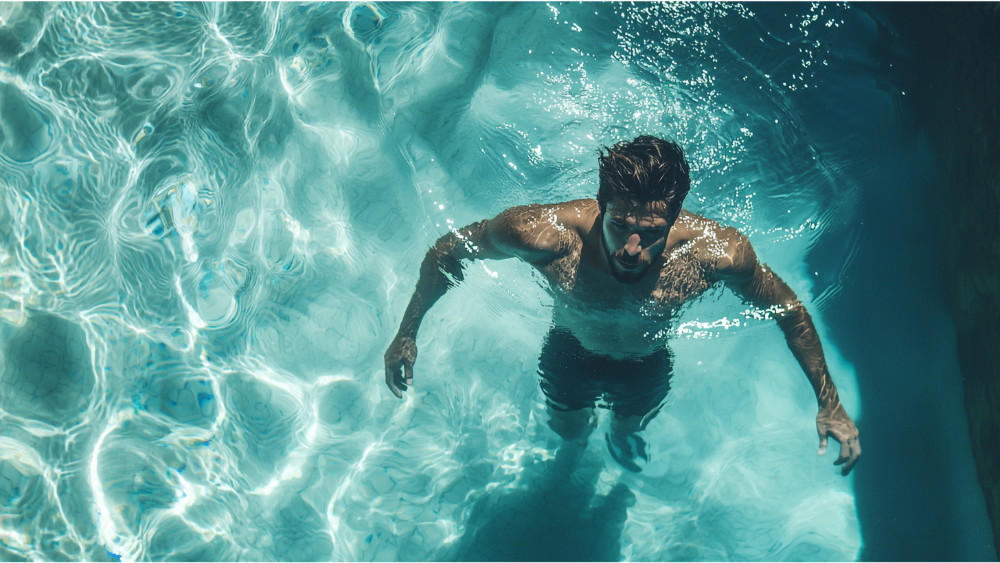
Leave a Reply